The Evolution of the Assyrian Flag
Date: August 13, 2021
Did you know that the current Assyrian flag is a relatively new design? The Assyrian Universal Alliance (AUA) proposed a competition for a new flag in 1968 and, in 1974, ultimately chose the one that we recognize today. It was designed by George Bit Atanus of Tehran, Iran. After that, the design quickly spread among Assyrians throughout the world.

Labeled Design by: Brian Banyamin
You can learn the history of the adoption of the Assyrian flag just by skimming through different issues of the Assyrian-American magazine, the Assyrian Star.
It appears that beginning in the May/June, 1967 issue of the Assyrian Star, an ad for the Assyrian American Educational Association begins showing up on the back cover of the magazine. However, starting with the November/December, 1970 issue, this ad begins to depict an Assyrian flag next to it. This particular Assyrian flag was created by Assyrians in the early twentieth century, and was eventually adopted by the newly-formed Assyrian American National Federation (Assyrian National Federation at the time) in the 1930s. The ad on the back of the Assyrian Star’s November/December, 1970 issue (depicted below) explains what the flag’s colors meant. The three stars on the flag represented the Assyrian Church of the East, the Chaldean Catholic Church, and the Syriac Orthodox Church.

The January/February, 1971 issue’s ad is in color, giving you a better idea of what the flag looked like.
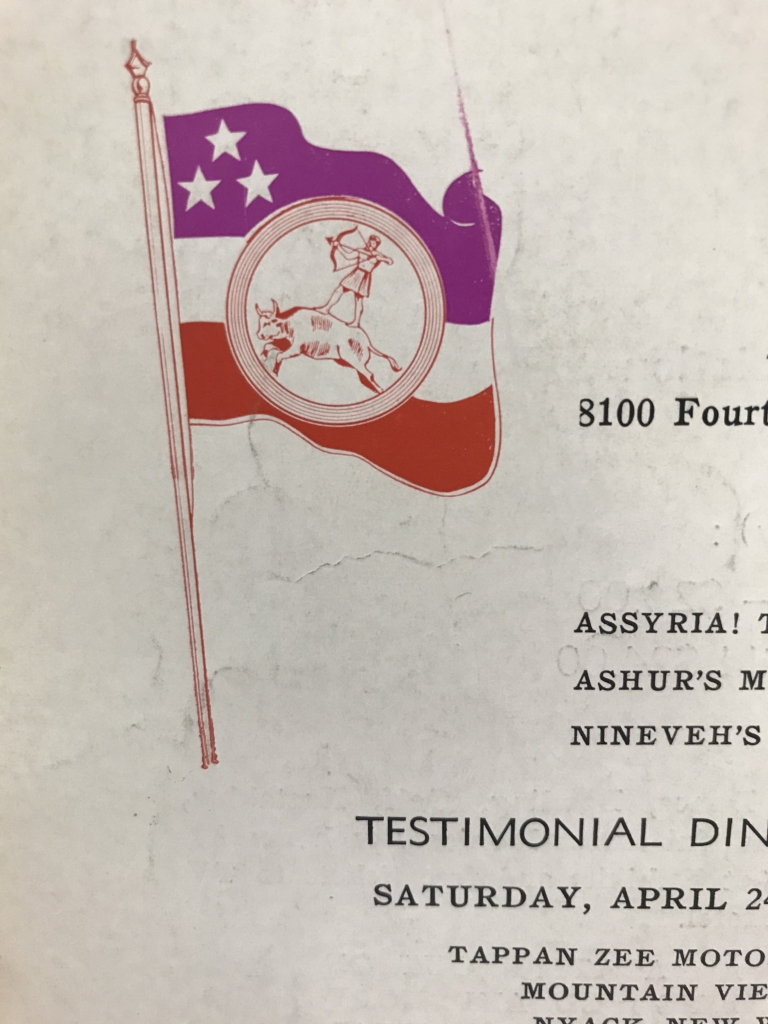
Starting in the January/February, 1972 issue of the Assyrian Star, the star of Shamash begins to consistently appear on the magazine’s front cover. Since the magazine is called the Assyrian Star, this makes sense. The star matches the one that eventually shows up on the current Assyrian flag.

Beginning in May/June, 1973, the Assyrian American Educational Association’s ads on the back cover of the Assyrian Star start to offer people the option of purchasing an Assyrian flag. Since these ads predate the current Assyrian flag, they were most likely selling flags with the older design.
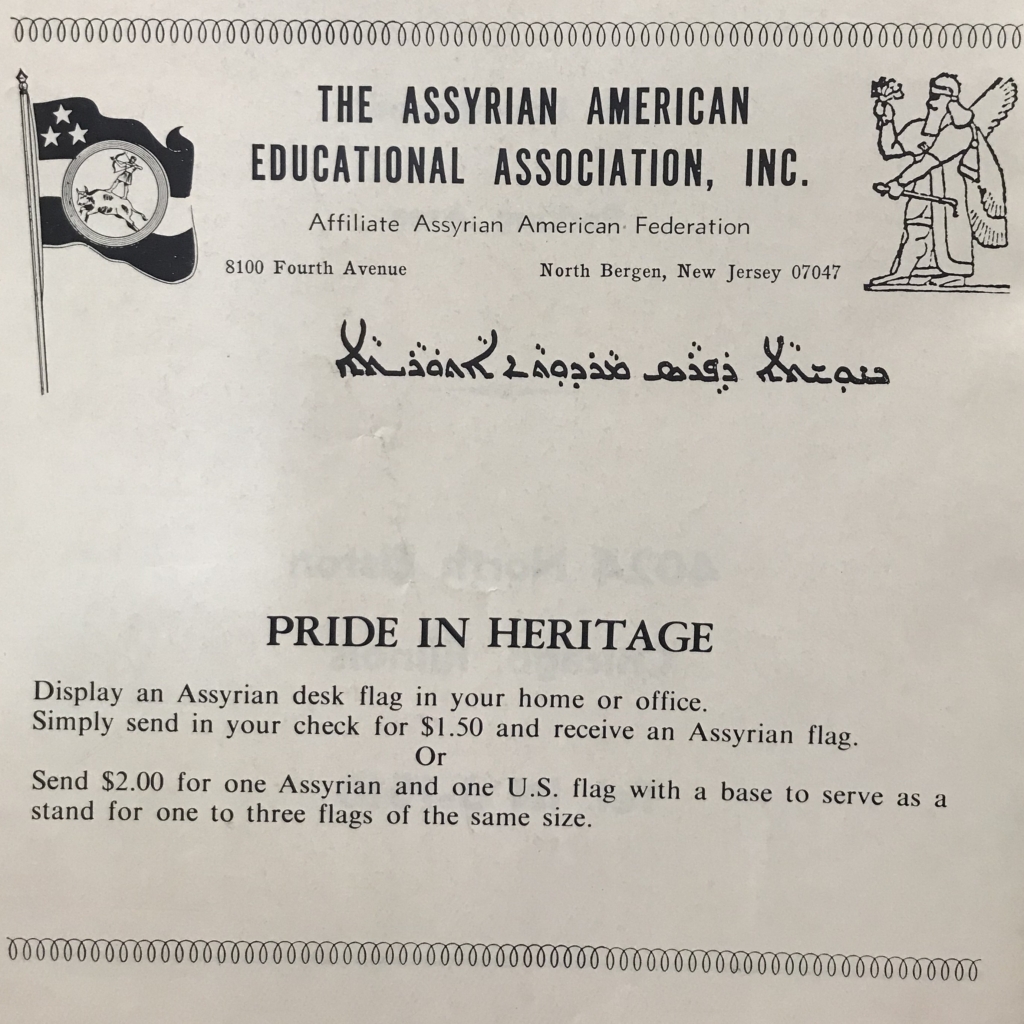
On page 2 of the September, 1975 issue of the Assyrian Star, you can find a drawing of people holding a flag that looks very similar to our current flag.
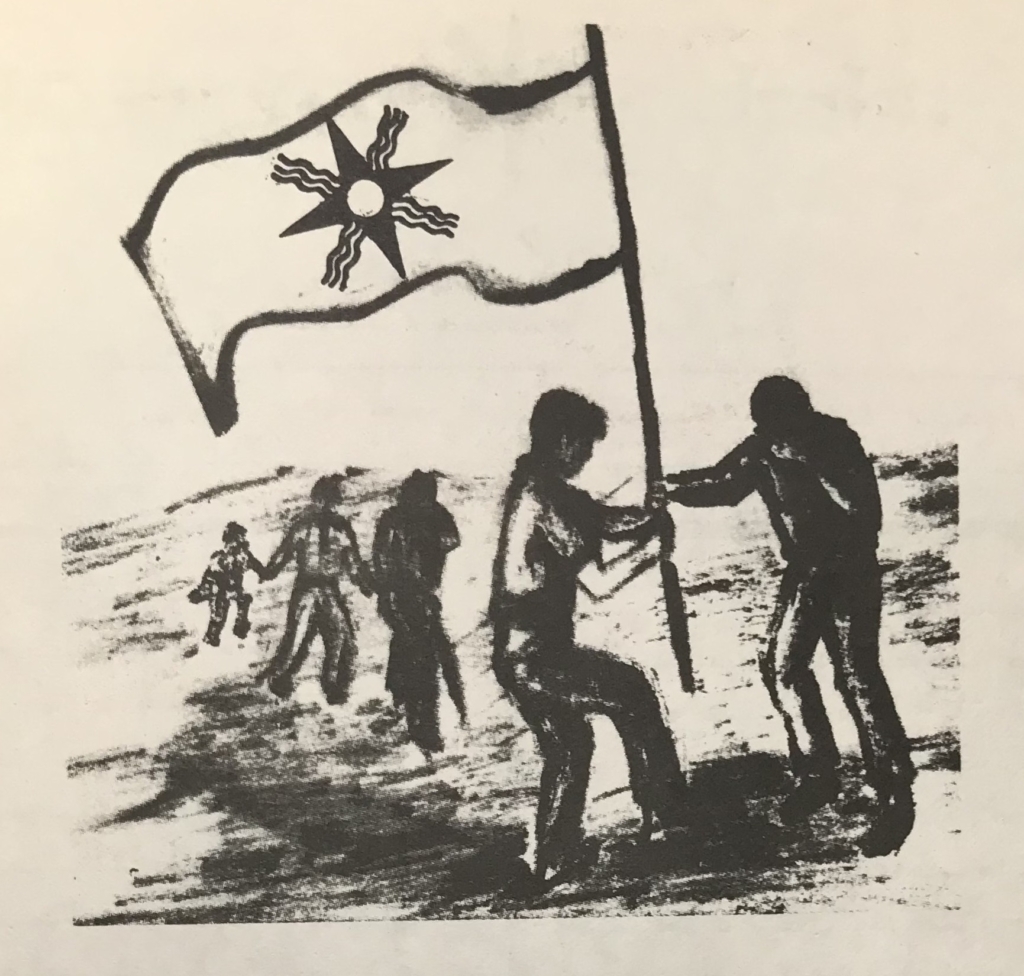
The front cover of the January, 1976 issue of the Assyrian Star officially announces the new Assyrian flag’s design.
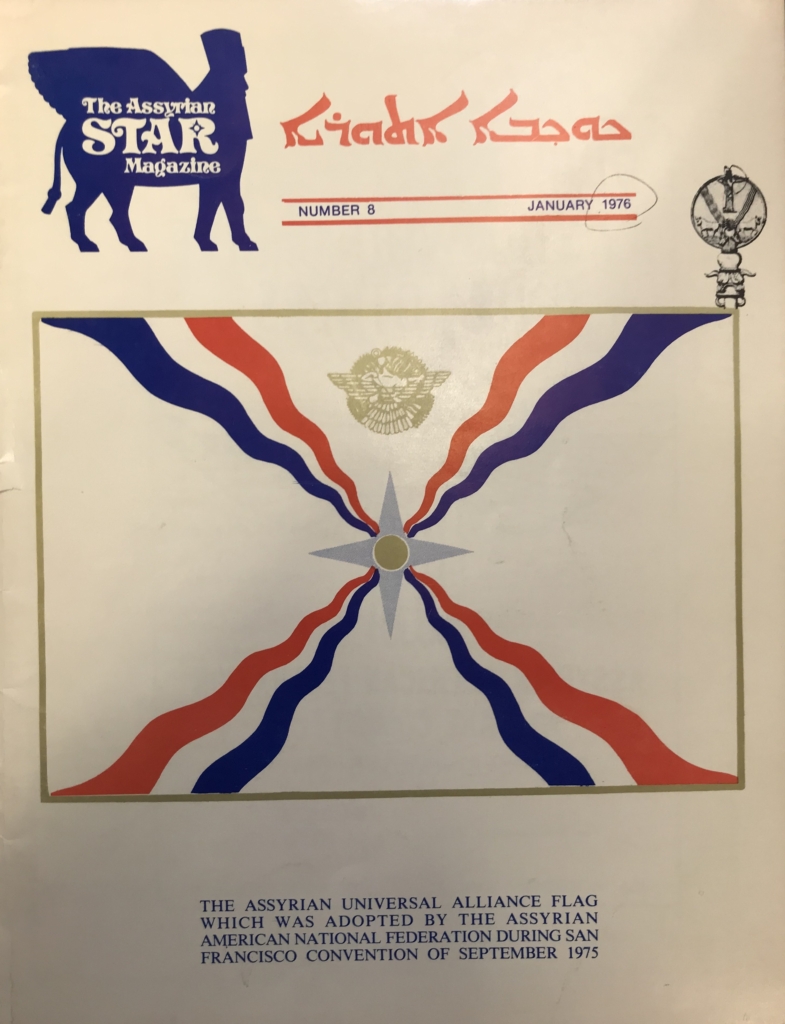
The front cover of the September/October, 1981 issue of the Assyrian Star depicts the 1981 Miss Assyrian winner holding a modern Assyrian flag. Page 10 of that issue also depicts other people holding a modern Assyrian flag.
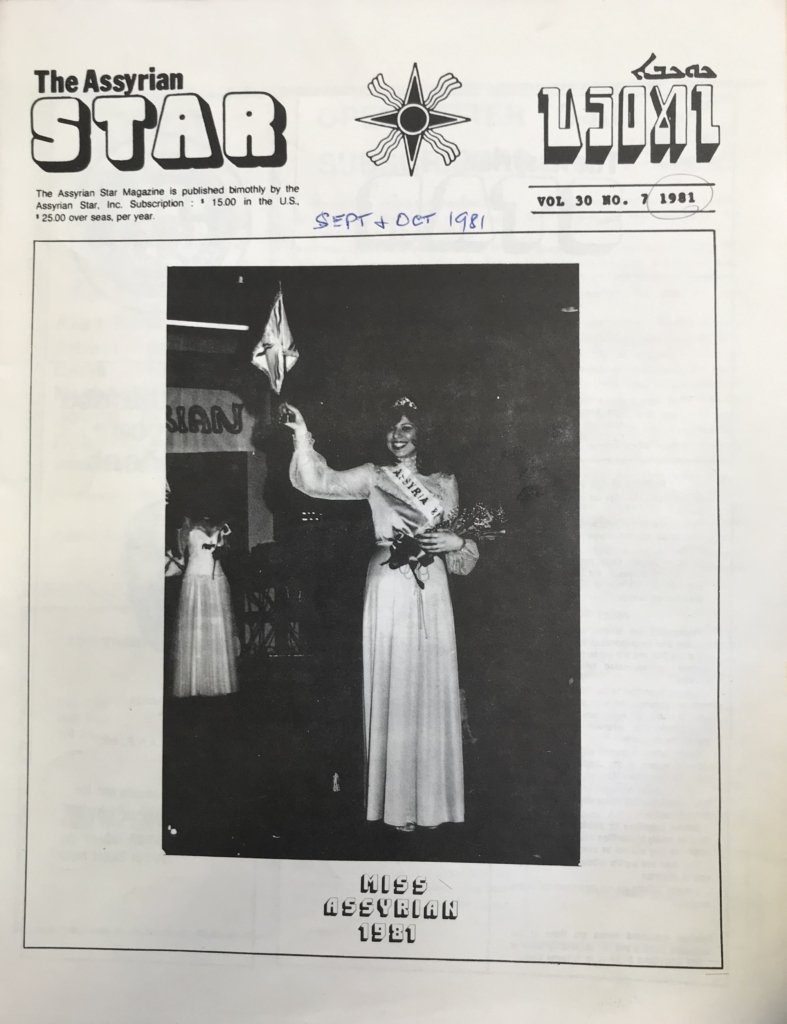
The next two photos come from the March/April, 1982 issue of the Assyrian Star. The two photos show many elements found in the modern Assyrian flag.


Finally, beginning in January/February, 1983, the Assyrian Star stops placing the Assyrian American Educational Association’s ad (the one selling the old Assyrian flags) on the back of its cover. Below is a photo of what shows up on the back of the January/February, 1983 issue instead.
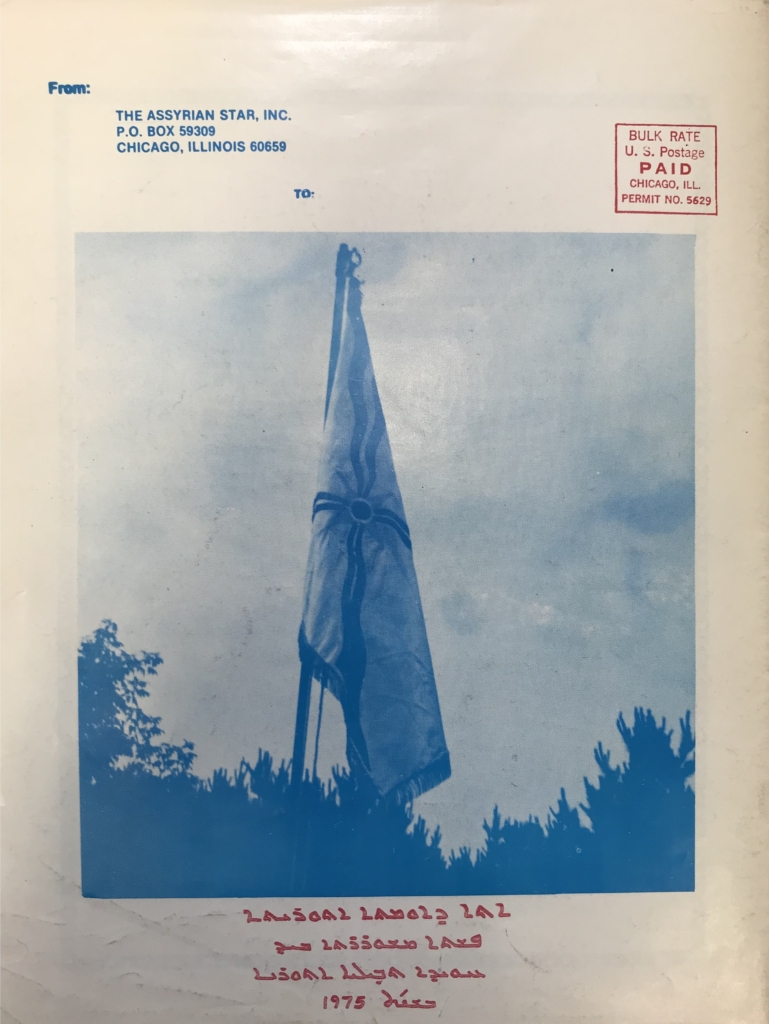
The back cover of the March/April, 1983 issue falls in a similar vein.
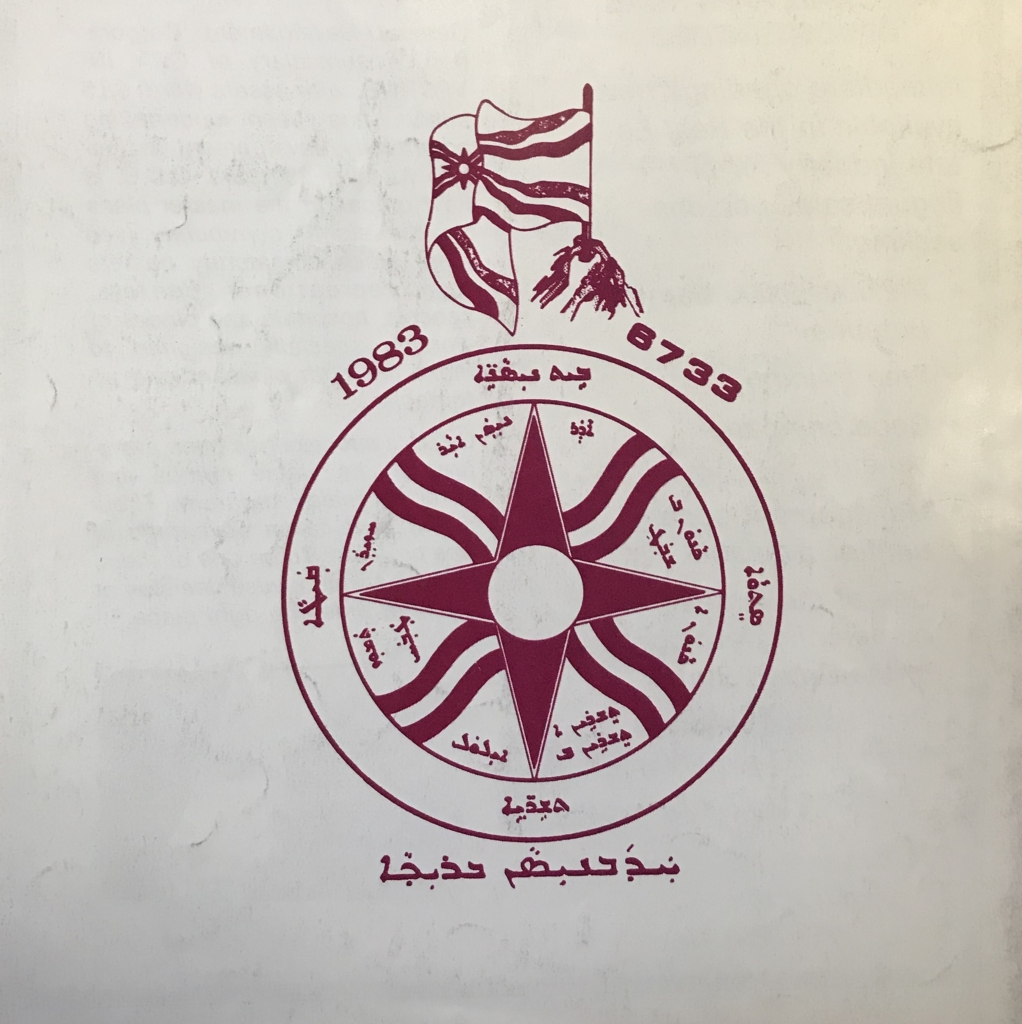
Thus, by looking through the different issues of the Assyrian Star magazine, we can see that it did not take long for the Assyrian community to adopt the new Assyrian flag.
By Esther Lang
Bibliography
“About Us.” Assyrian American National Federation. https://www.aanf.org/about-us/ (accessed March 3, 2021).
Ashurian, Homer. “Assyrian Flag.” Assyrian Universal Alliance. March, 1999. http://aua.net/assyrian-flag/ (accessed March 3, 2021).
Assyrian Star. https://www.assyrianstar.org/ (accessed March 3, 2021).
Assyrian Star, May/June 1967.
Assyrian Star, November/December, 1970.
Assyrian Star, January/February, 1971.
Assyrian Star, January/February, 1972.
Assyrian Star, May/June, 1973.
Assyrian Star, September, 1975.
Assyrian Star, January, 1976.
Assyrian Star, September/October, 1981.
Assyrian Star, March/April, 1982.
Assyrian Star, January/February, 1983.
Assyrian Star, March/April, 1983.
“Flag of the Assyrians.” Wikimedia Commons. https://commons.wikimedia.org/wiki/File:Flag_of_the_Assyrians.png (accessed March 3, 2021).

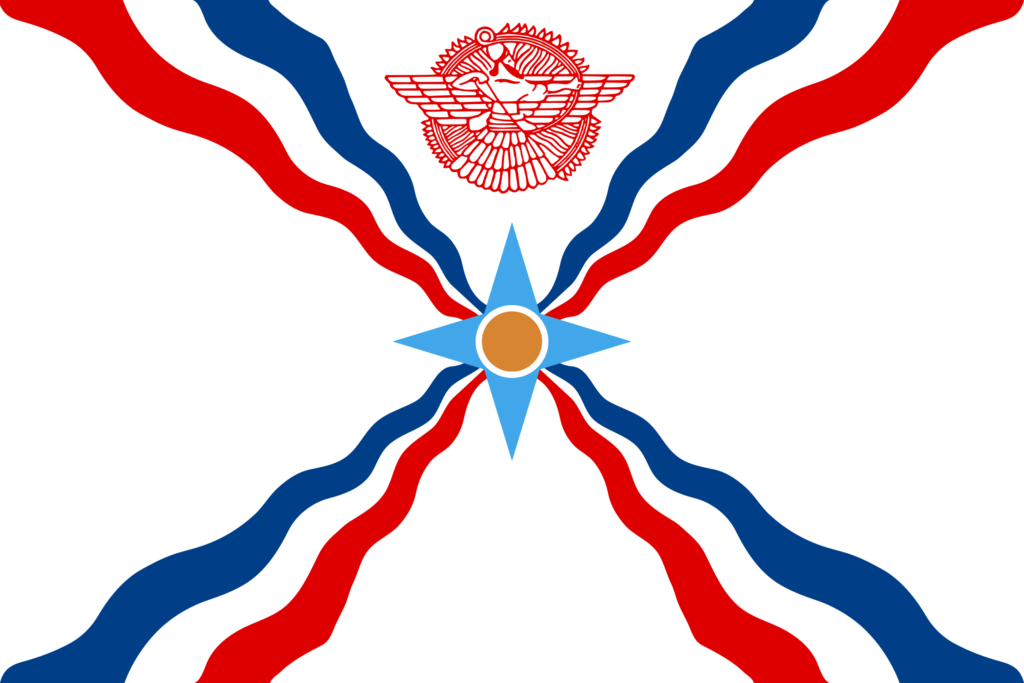
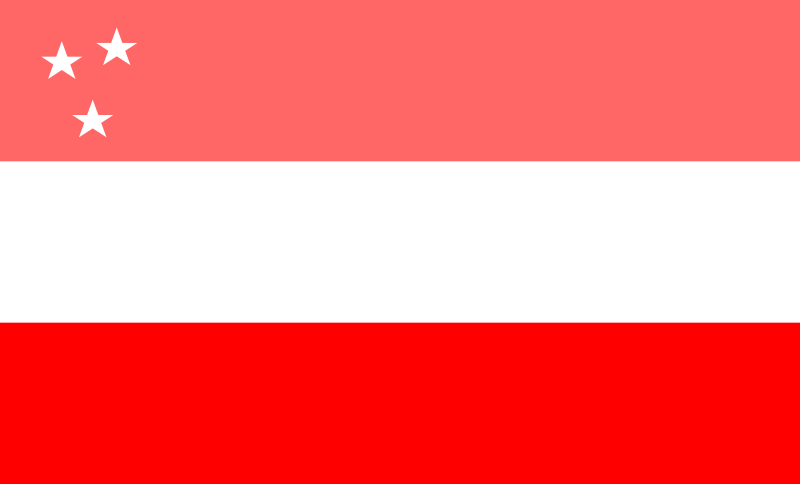 At one point, this was the official Assyrian flag, adopted prior to World War I. Created by the Syriac Orthodox community of Tur Abdin, the flag had three horizontal stripes in salmon, white, and red. On the salmon layer, there were three white stars positioned in the top left corner. These stars represented the three main churches of the Assyrian people: Church of the East, Chaldean Catholic Church, and Syriac Orthodox Church. The flag was used during delegation meetings between Assyrian politicians and Western leaders. This flag was abandoned in favor of Bit Atanus’s design.
At one point, this was the official Assyrian flag, adopted prior to World War I. Created by the Syriac Orthodox community of Tur Abdin, the flag had three horizontal stripes in salmon, white, and red. On the salmon layer, there were three white stars positioned in the top left corner. These stars represented the three main churches of the Assyrian people: Church of the East, Chaldean Catholic Church, and Syriac Orthodox Church. The flag was used during delegation meetings between Assyrian politicians and Western leaders. This flag was abandoned in favor of Bit Atanus’s design.